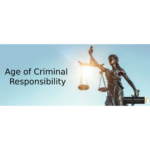Doli Incapax: The Presumption that Kids Between 10 and 14 Cannot Form Criminal Intent

A 15-year-old boy made a complaint to New South Wales police about his older brother twice having had sexual intercourse with him, whilst he was roughly 6 years and 9 months old, which made his brother then 11 years and 6 months old. And the teen further told police his brother had committed two indecent assaults, or acts of sexual touching, against him, when he was about 7 years and 5 months old.
As the allegations and subsequent charges laid against the older brother reveal, he was only about 11 and a half years old, and again, 12 years and 3 months old, when the alleged crimes were committed, so this then triggered the legal principle of doli incapax, which considers children under a certain age, usually 14, are incapable of committing a crime due to their developmental stage.
In August 2014, NSW District Court Judge Ross Letherbarrow found the older brother, who has been referred to as RP in the court system, guilty of three of the four offences that he had been charged with, and the then adult man was sentenced to 2 years and 5 months prison time, with non-parole set at 11 months.
The convicted offender then appealed his charges and sentence to the NSW Court of Criminal Appeal (NSWCCA) in June 2015, and a three justice bench found that whilst doli incapax had been rebutted in terms of two of the offences RP had been convicted over, it had not been ruled out in terms of the final conviction, count 4, and therefore, he was acquitted of that crime.
The acquittal on one charge did not result in any reduction in sentence, however, as the 3 month term that was imposed upon RP for that particular crime was being served concurrently with the broader term of prison covering the two convictions that continued to stand. And RP then sought special leave to appeal this outcome to the High Court of Australia, which was granted in 2016.
Sexual offences charged and tried
The initial charging of RP comprised of two counts of aggravated indecent assault, contrary to now repealed section 61M of the Crimes Act 1900 (NSW), which is an offence that carries 7 years prison time, and it can still be applied to charged individual’s whose alleged crimes were committed prior to 1 December 2018, when the offence was replaced with an updated version of the crime.
The Criminal Legislation Amendment (Child Sexual Abuse) Bill 2018 made these amendments and many more in relation to the NSW sexual offence regime, which was a task undertaken in response to the findings of the Royal Commission into Institutional Responses to Child Sexual Abuse.
The criminal offence now covering RP’s behaviour against his brother is known as aggravated sexual touching, and it is contained in section 61KD of the Crimes Act, and it carries up to 7 years imprisonment as well.
RP was further charged with two counts of sexual intercourse with a child under 10, contrary to section 66A of the Crimes Act, which is an offence that carries a maximum penalty of life imprisonment.
On trial and in appeal, counts 2 and 3 related to the sexual intercourse with a child that occurred on two occasions when the older boy was roughly 11 and a half, while counts 1 and 4 related to indecent assaults that were suggested to have occurred after RP was 12. But due to the evidence relating to the count 1 indecent assault, RP was acquitted of this charge during his initial trial.
The approach taken at trial was if doli incapax wasn’t established, or it was shown that RP was aware he had committed a crime in regard to count 2, the initial sexual intercourse incident, then it would logically follow that it was too established for counts 3 and 4. And the trial judge set out that he was satisfied beyond reasonable doubt that RP knew he was doing something seriously wrong.
The legal principle of doli incapax
As part of its 21 December 2016 final findings, the High Court explained that “the rationale for the presumption of doli incapax is the view that a child under 14 years of age is not sufficiently intellectually and morally developed to appreciate the difference between right and wrong and thus lacks the capacity for mens rea, or the ability to understand and hold the intent to commit a crime.
At common law, the justices of the High Court explained, the presumption of doli incapax is irrefutable up until the age of 7, while for the ages of 7 through to 13, it is open for the court to rebut the principle if the prosecution can prove the child was capable of understanding they were engaging in serious wrongdoing.
Section 5 of the Children (Criminal Proceedings) Act 1987 (NSW), however, provides that “no child who is under the age of 10 years can be guilty of an offence” in this state, and this translates as the age of criminal responsibility in NSW being set at 10 years old.
But this doesn’t otherwise affect the common law process, as if the prosecution can prove a child aged 10 to 13 knew “it was morally wrong to engage in the conduct that constitutes the physical element or elements of the offence”, they can be found guilty and imprisoned.
The wrongdoing that a child is aware of, and therefore, is not covered by the principle of doli incapax, must be distinguished from a child’s basic understanding that they’re being naughty or mischievous, and this is discerned in the courts via terms such as “seriously wrong” or “gravely wrong”.
Establishing that a child cannot be presumed doli incapax can’t be based upon the supposed obviousness of a crime, rather “the prosecution must point to evidence from which an inference can be drawn beyond reasonable doubt that the child’s development is such that he or she knew that it was morally wrong to engage in the conduct”.
Earlier proceedings
High Court Justices Stephen Gageler and Michelle Gordon granted RP special leave to appeal on two grounds.
The first ground comprised of the counts 2 and 3 convictions being unreasonable as doli incapax wasn’t established to the criminal standard, while the second comprised that it had been beholden upon the NSW appeals court to have quashed the count 3 conviction, as RP had been denied a fair trial in its regard.
The court heard that count 2 occurred when the boy’s father left him in charge of his younger siblings, and because his brother wouldn’t follow his directions, RP had anal intercourse with him.
Count 3 then occurred a week later, when a similar incident happened as the boys were left alone at their father’s workplace, while count 4 involved RP rubbing the outside of the crotch of his brother’s pants, while the pair were watching TV.
The only assessment of RP’s intellectual and moral development close to the time of offending had been a job capacity assessment at 17, which found him “borderline range of intellectual functioning” and saw him placed on the disability support pension, while at 18, a psychologist assessed him as a “fairly naïve and unsophisticated young man”, likely due to his “unsatisfactory upbringing”.
The trial judge ruled RP guilty, as count 2 saw him put a condom on prior to assaulting his brother, which was found to provide unequivocal understanding of the moral wrongness of the act, while RP’s use of force, the placing of his hand over his brother’s mouth to silence him, and his directing his brother not to tell anyone what had occurred, were all understood to further reinforce this guilt.
NSWCCA Justice David Davies rejected the condom as evidence to refute doli incapax but considered that anal intercourse was “obviously wrong”, and Justice Peter Johnson agreed with him. As for the third NSWCCA justice, Peter Hamill, he agreed that RP was able to be found guilty, but he based this on use of force, the attempt to silence his brother and his ordering him to keep the action to himself.
A contention was further raised over whether the suspension of doli incapax in regard to the count 3 anal intercourse incident could be inferred from the finding of it in regard to count 2.
Justices Davies and Johnson considered it could be. However, the High Court confirmed that Justice Hamill’s denial that the finding could simply be carried through to extinguish doli incapax in relation to another crime was correct, which meant the third conviction was “tainted by an error in law”.
The authority on doli incapax
Then High Court Chief Justice Susan Kiefel and Justices Virginia Bell, Patrick Keane and Gordon set out that the starting point for the case is that RP was presumed in law to be incapable of committing a criminal act, and the onus was on the prosecution to refute this.
Their Honours further noted that while sexual play amongst kids is often kept secret, RP’s play went well beyond regular forms, however this doesn’t mean he understood it was morally wrong.
The use of the condom by RP was found to be significant, as an 11-year-and-six-month-old child understanding to put on a condom prior to having anal sex, tends to convey either exposure to inappropriate material or his having been the subject of sexual interference himself. Yet, neither the father or anyone else were called on to give an account of the boy’s upbringing at trial.
Further, even though the evidence reveals that RP knew his brother was not consenting and that he was in distress, this does not mean that such a young child knows that they’re engaging in a “seriously wrong” act, and while RP’s intellectual limitations do not preclude establishing doli incapax, it does mean that the evidence proving it should be extinguished be precise.
So, in the absence of any evidence about RP’s upbringing or his performance at school, coupled with the fact that he, as an 11-year-old, was left in charge of his younger siblings, means it was not open to conclude that it had been proven beyond reasonable doubt that the boy understood his conduct, “in engaging in sexual intercourse with his younger brother, was seriously wrong in a moral sense”.
The four High Court justices ruled in December 2016, that the count 2 and 3 convictions, the two charges involving sexual intercourse with a child under 10, should be quashed and RP was acquitted of them.
And while remaining Justice Gageler agreed that the appeal was made out as a reasonable doubt remained regarding how RP understood his actions, his Honour further suggested that the evidence of the actual incidents alone do point towards a finding of guilt, but it was the later produced psychological reports about RP that throw the determination of guilt into doubt.








